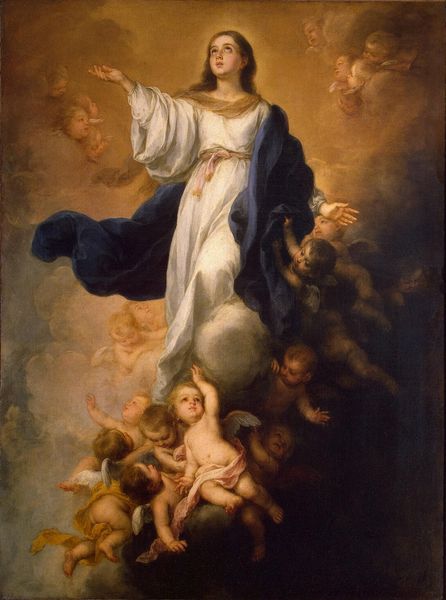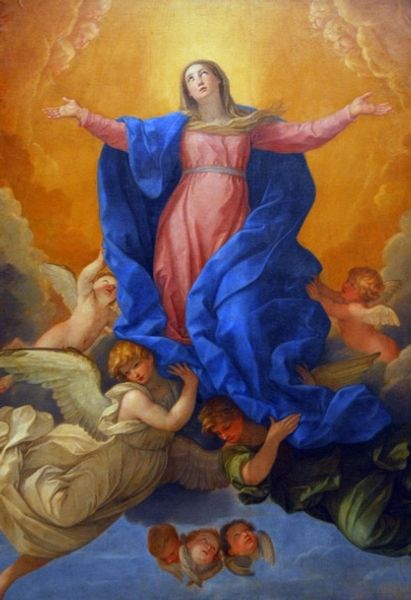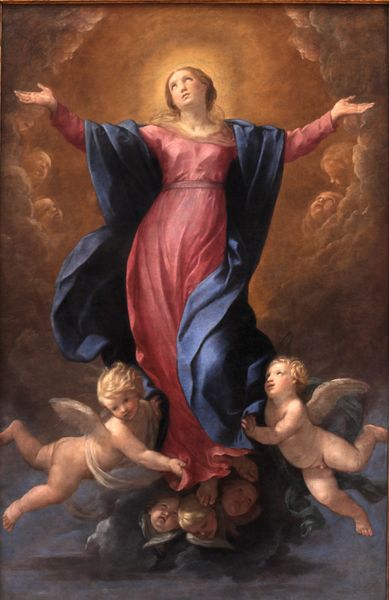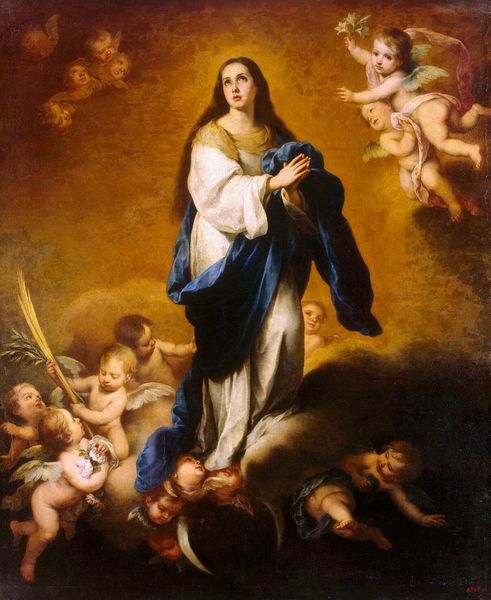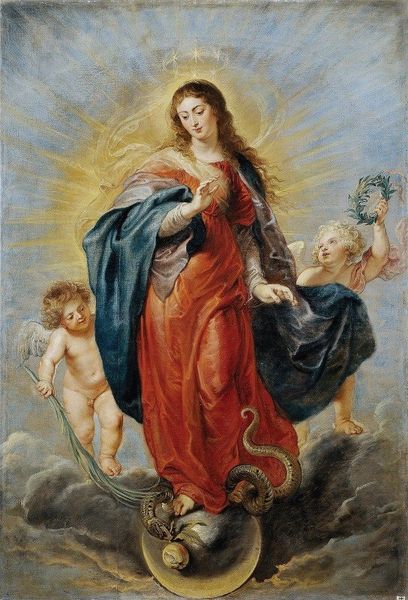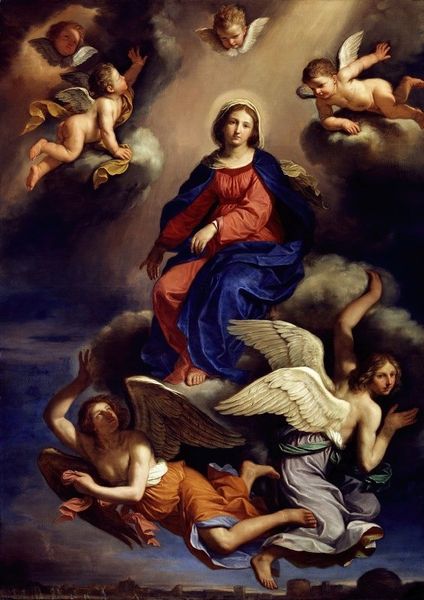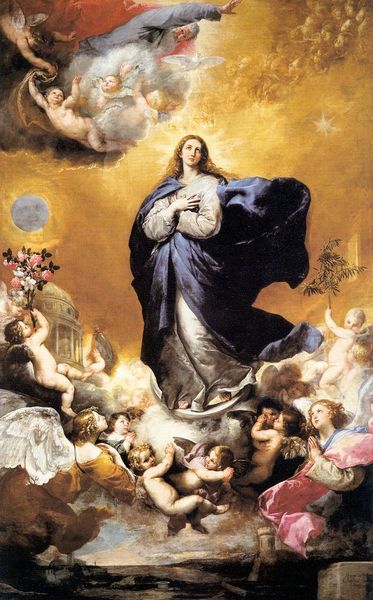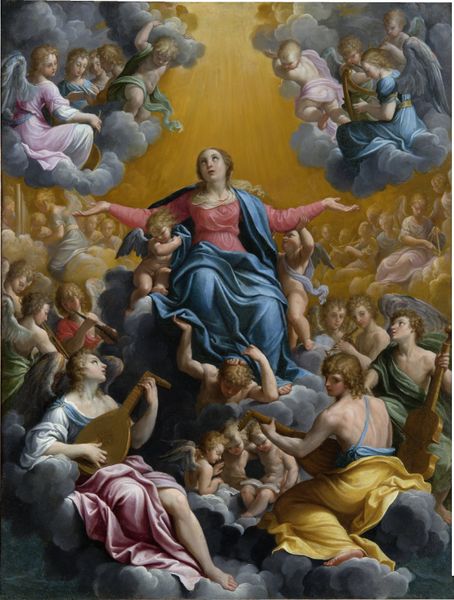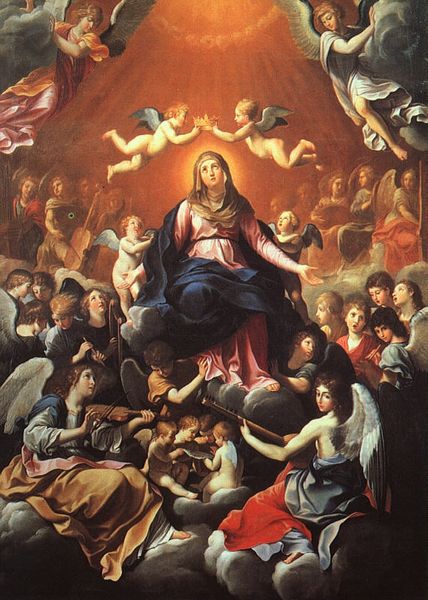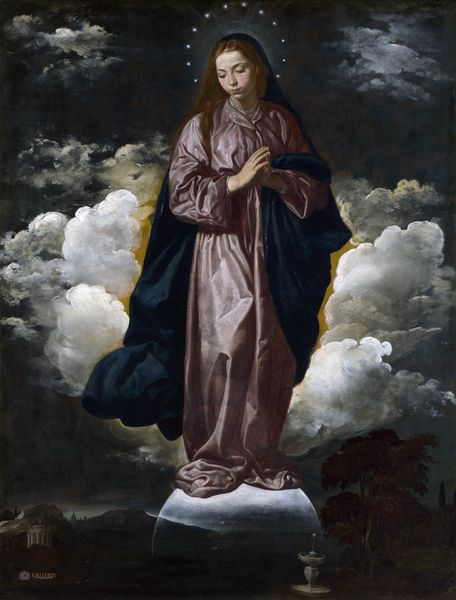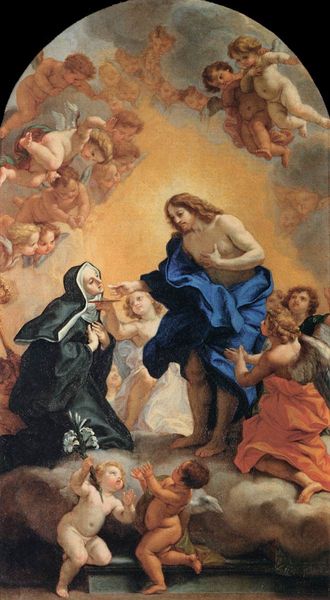
painting, oil-paint
#
portrait
#
allegory
#
baroque
#
painting
#
oil-paint
#
figuration
#
oil painting
#
history-painting
#
academic-art
#
italian-renaissance
#
portrait art
Copyright: Public Domain: Artvee
Curator: Looking at Guido Reni's oil painting, "The Immaculate Conception," completed in 1627, the initial impression is of lightness. A sort of ethereal floatation, wouldn’t you say? Editor: Indeed. I am immediately drawn to the interplay of the deep blues of her robe against the delicate pink of her dress, and the rather visible brushstrokes giving the impression of great dynamism despite the serene subject. It begs the question of sourcing; what pigments were available at that time, and what kind of labour went into creating those ultramarine blues? Curator: An excellent point. Notice the crescent moon at her feet – a traditional symbol of purity and often associated with the Virgin Mary. The Immaculate Conception itself refers to the belief that Mary was conceived without original sin, hence her elevated and divine status as represented here. The luminosity surrounding her head is equally symbolic of her sacred role. Editor: And what was the socioeconomic situation of the artist? Were his patrons the church, the state, or wealthy individuals, and how might their tastes have shaped his production? One also wonders about the cost and the relative availability of canvas that allowed such scale. Curator: Ah, yes. The patronage system, vital to understand. I see here the enduring power of religious symbolism through a more academic lens: the cherubic faces swirling in the clouds also signify divine presence and act as witnesses to her purity and grace. They guide our interpretation. Editor: The cherubic faces also imply mass workshop production. How were such artworks commissioned, distributed, and consumed? Reni undoubtedly employed a team, impacting local employment as well as access to education. What do the technical specifications reveal regarding studio practice at the time? Curator: From an iconographic point, the hands clasped in prayer – her posture reflects humility and reverence, inviting viewers to adopt a similar devotional attitude, creating a continuity of belief and cultural identity, especially when understanding Baroque as propaganda to win new Catholics during the Counter-Reformation. Editor: Fascinating how materials, techniques, and iconographies interweave. Each element points towards understanding material and devotional production under specific circumstances. Curator: Indeed. Considering the symbolic weight given to gestures like clasped hands is also a gateway to a wider understanding of art as a vessel of feeling and belief. Editor: Right, and I cannot help to wonder how and if current ethical artistic manufacturing is in line with history and faith in materials to create an experience, or push a message.
Comments
No comments
Be the first to comment and join the conversation on the ultimate creative platform.


